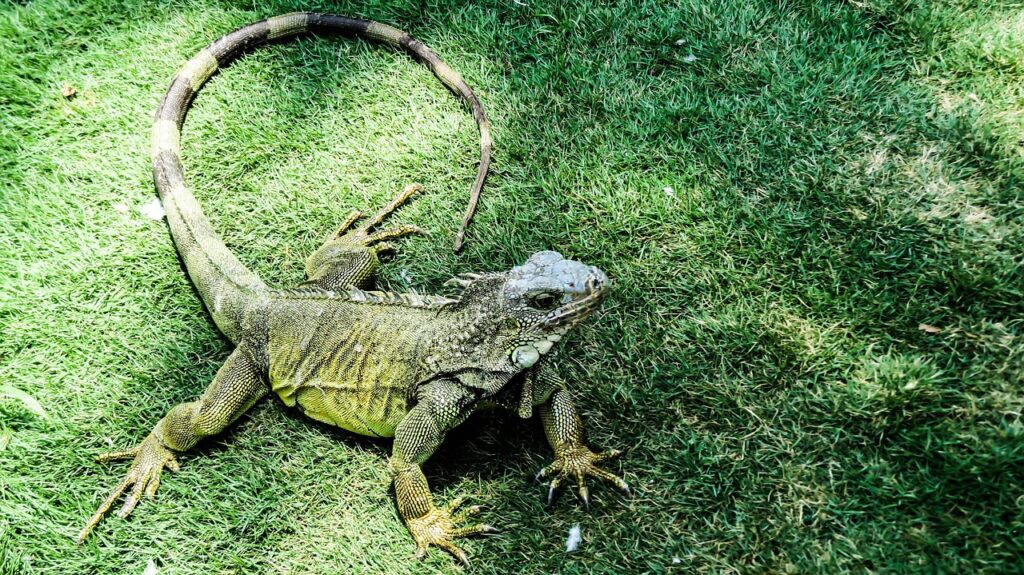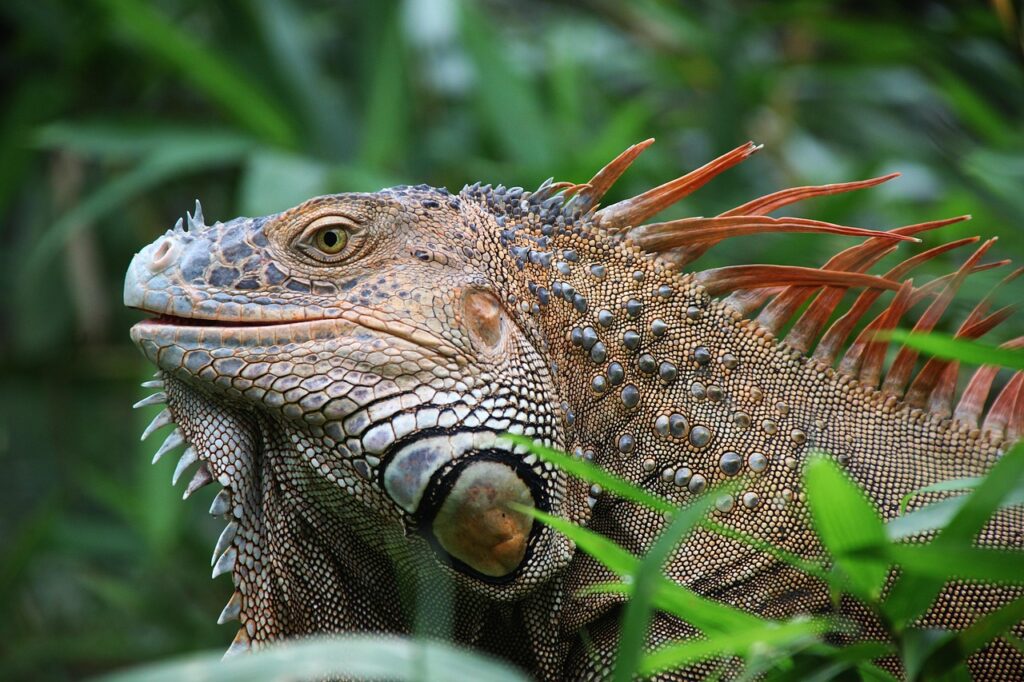Knowing if your iguana is stressed can help keep your pet happy and healthy. Stress in iguanas often shows up in their behavior and physical symptoms. You might notice changes in their eating habits or their overall level of activity.

Another clear sign of stress is when your iguana tries to escape frequently or becomes more aggressive. If your pet starts hiding more than usual or shows signs of discomfort like frequent tail whipping, these are also indications something might be wrong.
Look out for changes in color, as stressed iguanas can become darker. Ensuring your iguana’s environment is comfortable and meets their needs can go a long way in keeping them content. Always provide proper heat, light, and hideaways to create a stress-free habitat.
Recognizing Stress in Iguanas

To help your iguana stay healthy, it’s important to spot the signs of stress early. Look for changes in physical appearance, behavior, and environment that might be causing stress.
Physical Signs of Stress
Watch color changes. A stressed iguana may turn darker or even black.
Check for signs of tail whipping. This can mean the iguana feels threatened.
Observe posture and spines. Raised spines and a puffed-up body could mean the iguana is upset.
Look at the mouth. Mouth gaping or hissing is often a stress signal.
Notice the eyes. A stressed iguana’s eyes may appear more alert and focused.
Behavioral Indicators
Monitor aggressive postures. This includes head bobs and tail whips.
Look for pacing or scratching. These behaviors indicate the iguana wants to escape or is uncomfortable.
Check for licking and biting. An iguana that licks surfaces more often or bites more may be stressed.
Observe changes in eating patterns. Not eating or eating less can be a sign of stress.
Listen for hissing or puffing up. These sounds are warning signs of stress or anger.
Environmental Triggers and Stress
Ensure proper lighting. Inadequate light can stress your iguana.
Check the temperature. Too hot or too cold conditions can cause stress.
Evaluate their space. Cramped environments can lead to stress behaviors like scratching and pacing.
Consider handling frequency. Being handled too often or too roughly can stress an iguana.
Inspect for loud noises. Loud sounds can create an unsettled environment that stresses iguanas.
Maintaining a Stress-Free Environment

Creating a stress-free environment for an iguana involves properly setting up its habitat, keeping routines consistent, and ensuring safe handling. Attention to detail in these areas can help maintain the iguana’s comfort and security.
Proper Habitat Setup
A well-designed cage is crucial. It should be spacious enough for the iguana to move around comfortably. A good rule is a minimum of 6 feet long, 4 feet wide, and 6 feet high. Proper lighting is vital, including a UVA/UVB bulb to mimic natural sunlight.
Heat sources, such as ceramic heaters or heat lamps, are also essential. Aim for a temperature gradient, with a basking spot around 95°F and the cool side at 75°F. Include branches and platforms for climbing to make the environment more engaging.
Routine and Consistency
Iguanas thrive on routine. Feeding, cleaning, and interaction should occur at the same times each day to build a sense of security. Regular schedules make the iguana feel more comfortable and reduce stress.
Include a balanced diet of leafy greens, vegetables, and occasional fruits. Avoid sudden changes in diet or environment, as these can cause stress.
Safe Handling and Interaction
Handling should be done gently and calmly. Approach the iguana slowly to avoid startling it. Ensure that interactions are positive to build trust and a strong bond.
Avoid picking up the iguana by its tail, as this can cause injury. Instead, support its body and legs properly. Supervise interactions with other pets, like cats and dogs, to prevent any threats to its safety.
Improving Your Bond with the Iguana
Building a strong relationship with your iguana involves understanding its behavior, communicating effectively, and managing aggression or dominance issues.
Understanding Iguana Behavior
Iguanas can show their emotions through body language. For instance, a relaxed posture usually means an iguana feels safe. If an iguana becomes defensive, it might puff up its body or whip its tail. Recognizing these signals helps in creating a friendly environment.
During the breeding season, behaviors might change. Male iguanas can become more aggressive. It’s important to be patient and understand these changes to maintain trust.
A new environment can also stress an iguana. Owners need to give their iguanas time to adjust and explore their new surroundings at their own pace.
Effective Communication Methods
Communicating with your iguana involves more than words. Feeding can be a great way to build trust. Hand-feed your iguana to show that you mean no harm. This makes them more comfortable around you.
Touch is another key method. Gentle petting, especially on the head, can help your iguana associate you with positive feelings. Do this regularly to make them more tame.
Observe their reactions closely. If your iguana backs off or seems upset, give it space. Consistent communication helps strengthen the bond and makes interactions smoother.
Addressing Aggression and Dominance Issues
Addressing aggression is crucial for a healthy relationship. If an iguana shows dominance, such as head bobbing or tail whipping, it must be addressed calmly. Avoid direct eye contact, as they might see it as a threat.
Training helps. Use gentle reinforcement techniques to reward calm behavior. If aggression persists, consulting a veterinarian experienced with lizards can be useful.
During the sleeping hours, ensure your iguana has a quiet and safe place. This reduces stress and prevents unnecessary aggressive behavior. Providing a stable and comfortable environment goes a long way in reducing dominance issues.
